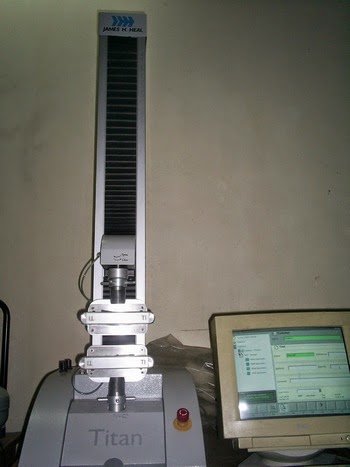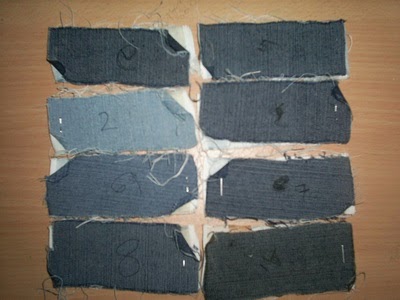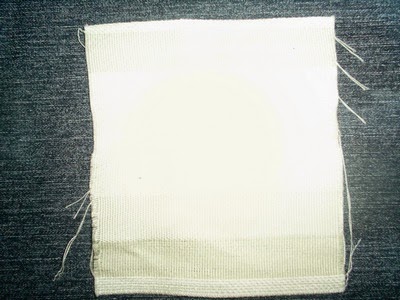Now You Know Garment Washing: An Effective Process for Beautification of Garments (Part-6)
Monday, 4 February 2019
Edit
Garment Washing: An Effective Process for Beautification of Garments (Part-6)
Rahat Khan
Dept. of Apparel Manufacturing
Atish Dipankar University of Science and Technology
Cell: +8801717781833
Email: rahat.info@gmail.com
Dept. of Apparel Manufacturing
Atish Dipankar University of Science and Technology
Cell: +8801717781833
Email: rahat.info@gmail.com
Previous Part
Chapter 5
Test procedure
Test procedure
5.1 Test procedure:
The following are the names of the tests that have been done during the project work
- Strength loss
- Color fastness to washing (washing)
- Color fastness rubbing (crocking test)
- Dimensional stability
- Weight loss
- Outlook change / Visual assessment
Since a considerable amount of impurities (dirt, dust) are removed in washing process, the strength loss of fabrics can be a parameter .For garments washing for this test, the strength of the garments sample before and after washing is measured by any fabric strength tester.
Strength tester:
 |
| Fig-15: Titan strength tester |
- The end of the sample was placed on the upper clamp in the titan universal strength tester machine.
- Then other part of the sample was placed on the bottom clamp in the titan universal strength tester machine.
- By using motion indicator, both clamps was closed or fixed.
- Then the machine was started and both the clamps were moving, upper clamp to the upper direction and bottom clamp to the lower direction.
- After a certain time when the fabric could not bear the extension load the it breaks and machine stopped.
- Finally, the result was shown in the monitor of the titan universal strength tester machine.
 |
| Fig-16: Sample (before strength test) |
 |
| Fig-17: Sample (after strength test) |
Strength test by strength tester.
No. | Sample type | Sample direction | Maximum force N | Extension % | Time to break S |
1. | Basic | Warp | 965 | 9.28 | 34.3 |
2. | Weft | 1050 | 43.87 | 54.2 | |
3. | Enzyme | Warp | 795.14 | 27.40 | 49.2 |
4. | Weft | 762.27 | 55.40 | 51.0 | |
5. | Stone Enzyme | Warp | 958.49 | 26.85 | 60.8 |
6. | Weft | 1014.26 | 65.13 | 55.3 | |
7. | Pattern whicker | Warp | 768.9 | 32.8 | 42.3 |
8. | Weft | 623.80 | 48.90 | 47.5 | |
9. | Hand whicker | Warp | 960.59 | 35.32 | 133.6 |
10. | Weft | 919.47 | 56.81 | 49.0 | |
11. | Medium bleach | Warp | 901.08 | 29.24 | 65.8 |
12. | Weft | 804.95 | 57.44 | 49.3 | |
13. | Light bleach | Warp | 701 | 19.60 | 76.8 |
14. | Weft | 831 | 53.99 | 62.9 | |
15. | Potassium permanganate with tinting | Warp | 914.81 | 34.14 | 77.4 |
16. | Weft | 846.25 | 62.35 | 59.5 |
5.1.2 Color fastness (washing)
Color Fastness to washing is one of the important dyeing properties to the consumers.
There is a variety of testing procedure to some extent, these have arisen:
Reagents:
If the textile to be tested is fabric: cut out a specimen of 10cmX 4cm & make sure all color is included in it. Sew it along all four edges with the same size of multi fiber fabric.
Recipe:
Test procedure (based on ISO: 103/5):
The contrast between white rubbing cloth was Compared with the staining grey scale & rated from 1-5 & changing in the tested specimen with changing grey scale.
Experimental data for washing fastness:
Color Fastness to washing is one of the important dyeing properties to the consumers.
There is a variety of testing procedure to some extent, these have arisen:
Related:
- Washing condition vary from one country to another
- The method depends on the basis of the material used.
- Wash-wheel with a thermostatically controlled water bath & rotating speed of 40±2 rpm.
- Stainless steel container
- Stainless steel bowl
- Multi-Fiber fabric
- Wool
- Acrylic
- Polyester
- Nylon
- Cotton
- Acetate.
- Sewing machine
- Dryer
- ISO type grey scale for changing
- ISO type grey scale for staining
 |
| Fig-18: Gyrowash |
- Detergent (without optical brightener)
- Sodium Carbonate
- Distilled water
If the textile to be tested is fabric: cut out a specimen of 10cmX 4cm & make sure all color is included in it. Sew it along all four edges with the same size of multi fiber fabric.
Recipe:
- Detergent : 5gm/L
- M:L :1:5
- Soda :2gm
- Time :30min
- Temperature :600c
 |
| Fig-19: Sample (After test) |
 |
| Fig-20: Sample (After test) |
 |
| Fig-21: Multi fiber strip |
- 5gm detergent was Dissolved in to 1 liter of water
- 2gm sodium carbonate Dissolved in to 1 liter of water
- The machine temperature was Raised to 600c
- The specimen was put in to the stainless steel container
- The stainless steel container with specimen was put in to the machine
- The machine was kept running for 30 min
- Excess water was Extracted from specimen by squeezing
- The specimen was dried with hand dryer
The contrast between white rubbing cloth was Compared with the staining grey scale & rated from 1-5 & changing in the tested specimen with changing grey scale.
Experimental data for washing fastness:
No. | Name | Grading for color fastness |
1. | Denim fabric without wash | 4/5 |
2. | Super bleach wash | 5 |
3. | Medium bleach wash | 4/5 |
4. | Stone enzyme | 5 |
5. | Enzyme wash | 5 |
6. | Hand whicker | 4/5 |
7. | Pattern whicker | 4/5 |
8. | Potassium permanganate | 1/2 |
Average grade/ range of testing: 1-5 grades
Interpretation of grade: (5) Excellent, (4) Good, (3) Fair, (2) Poor, (1) Very poor
Interpretation of grade: (5) Excellent, (4) Good, (3) Fair, (2) Poor, (1) Very poor
Grading for staining | |||||||
No. | Name | Acetate | Cotton | Nylon | Polyester | Acrylic | Wool |
1. | Denim fabric without wash | 1 | 4 | ½ | 4 | 4/5 | ¾ |
2. | Super bleach wash | ½ | ½ | 2 | 4/5 | 5 | 4 |
3. | Medium bleach wash | ½ | 4/5 | 2/3 | 4/5 | 5 | ¾ |
4. | Stone enzyme wash | ½ | 4/5 | 2 | 4/5 | 4/5 | 4/5 |
5. | Enzyme wash | 2/3 | 4/5 | 2 | 4/5 | 4/5 | 4 |
6. | Hand brush | ½ | 4/5 | 2 | 4/5 | 4/5 | 4/5 |
7. | Machine brush | ½ | 4/5 | 2 | 4/5 | 5 | 5 |
8. | Potassium permanganate | 3 | 4/5 | 4 | ¾ | 1 | 4 |
Average grade/ range of testing: 1-5 grades
Interpretation of grade: (5) Excellent, (4) Good, (3) Fair, (2) Poor, (1) Very poor
Interpretation of grade: (5) Excellent, (4) Good, (3) Fair, (2) Poor, (1) Very poor
Sumber http://textilelearner.blogspot.com







